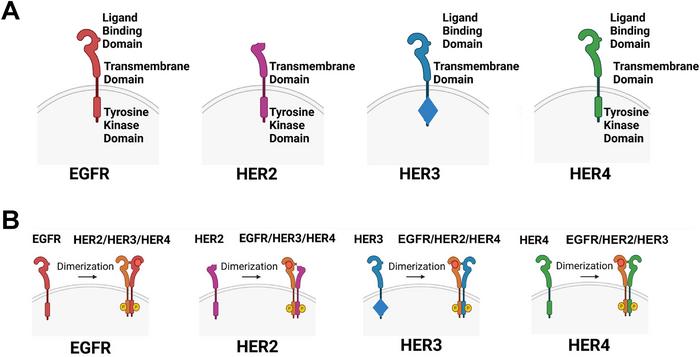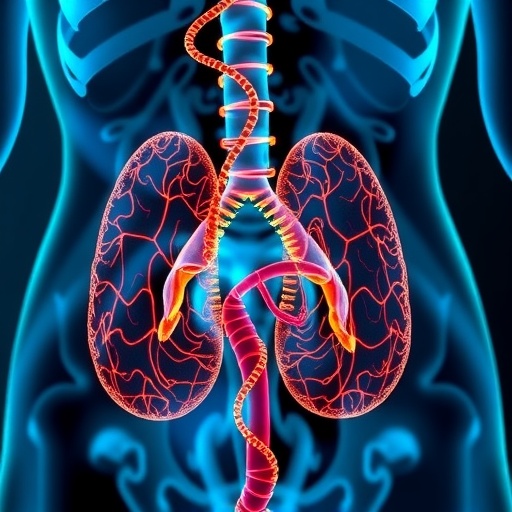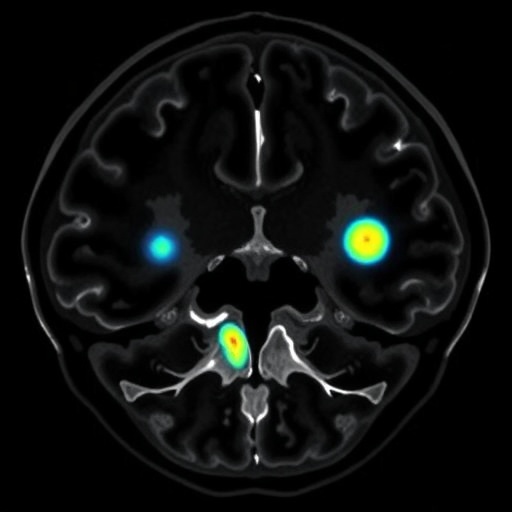
In the complex landscape of oncology, the ErbB family of receptor tyrosine kinases has long captivated researchers with its pivotal role in cell growth and tumor progression. Among these, HER3—or human epidermal growth factor receptor 3—has historically been something of an enigma. Once dismissed as a subordinate member due to its impaired kinase activity, recent advancements have repositioned HER3 at the forefront of cancer biology. Emerging evidence indicates that HER3 is not merely a bystander but a potent driver of malignancy, orchestrating signaling networks that facilitate tumor survival, metastasis, and resistance to therapy.
HER3’s biological significance stems largely from its unique capacity to form functional heterodimers with other ErbB family members, most notably HER2. While HER3 lacks robust intrinsic kinase function, its cytoplasmic domain contains multiple docking sites for the p85 subunit of PI3K, enabling potent activation of the PI3K/Akt signaling cascade upon dimerization. This mechanism allows HER3 to serve as a critical amplifier of downstream signaling pathways, effectively coupling extracellular ligand binding events to intracellular proliferation and survival responses crucial to cancer progression.
The downstream effects of these HER3 heterodimers engage several key oncogenic signaling pathways. Among these are the mitogen-activated protein kinase (MAPK) and phosphatidylinositol-3-kinase (PI3K)/Akt pathways—both instrumental in driving cell cycle progression, preventing programmed cell death, and promoting metastatic dissemination. Aberrant activation of these pathways through HER3 overexpression or mutation has been implicated in the aggressive behavior of various solid tumors, including breast, lung, colorectal, pancreatic, and gynecologic cancers, highlighting HER3’s broad impact across diverse tumor types.
Clinically, elevated HER3 expression correlates strongly with poor patient prognoses and the emergence of resistance to standard therapies. This observation has galvanized efforts to develop HER3-targeted therapeutics, including monoclonal antibodies and small molecules designed to interrupt ligand binding or receptor dimerization. However, despite these targeted interventions, clinical outcomes have often been disappointing. Many trials have failed to demonstrate meaningful efficacy, underscoring the challenges inherent in targeting HER3’s complex biology.
A critical barrier to successful HER3-targeted therapy appears to be the heterogeneity in patient tumor biology. Not all cancers with HER3 expression rely on HER3 signaling equally, and only subsets—characterized by specific biomarkers such as neuregulin-1 (NRG1) gene fusions or high receptor density—show meaningful responses. This realization has prompted calls for improved predictive biomarkers capable of identifying patients whose tumors are “addicted” to HER3 signaling, thereby refining patient selection and enhancing therapeutic impact.
Adding another layer of complexity is the tumor microenvironment, which exerts a profound influence on HER3 activation. Paracrine signals originating from stromal components, particularly fibroblasts and liver endothelial cells, can induce HER3 activity independently of canonical ligands. This non-genetic activation shields tumor cells from targeted therapies and contributes to therapeutic resistance and disease relapse, emphasizing the need for treatment strategies that consider both tumor-intrinsic and microenvironmental factors.
In response to these challenges, antibody-drug conjugates (ADCs) targeting HER3 have emerged as a promising second wave of therapeutic innovation. These conjugates link cytotoxic agents to HER3-specific antibodies, selectively delivering chemotherapy to HER3-positive cells while sparing normal tissues. Early-phase clinical trials in HER3-expressing breast and lung cancers have yielded encouraging results, suggesting that ADCs could overcome previous limitations by effectively eradicating resistant tumor subsets.
These advances also underscore the necessity of incorporating HER3 expression profiling into clinical practice. Precise quantification and qualitative analysis of HER3 levels could guide patient stratification, ensuring that therapies are administered to individuals most likely to benefit. This biomarker-driven approach, paired with novel therapeutic modalities, signals a shift toward precision oncology where HER3 transitions from an elusive target to a central node in personalized cancer treatment algorithms.
Fundamental to this evolving paradigm is an enhanced molecular understanding of HER3. Ongoing research elucidates the intricate interplay between HER3 phosphorylation patterns, dimerization partners, and downstream effectors, revealing therapeutic vulnerabilities that were previously unappreciated. As such, HER3 is gradually being redefined not only as a contributor to oncogenic signaling but also as a viable and dynamic target whose inhibition can disrupt tumor networks at multiple nodes.
In sum, the reevaluation of HER3 reflects broader trends in oncology where “undruggable” targets are revisited with sophisticated tools and deeper biological insight. The convergence of improved diagnostics, refined therapeutic designs—including ADCs and combination regimens—and recognition of microenvironmental influences forms the cornerstone upon which future clinical successes will be built. With these advances, HER3 stands poised to fulfill its promise as a keystone in the fight against treatment-resistant solid tumors.
This emerging narrative offers a compelling example of how revisiting established dogma through rigorous, mechanistic investigation can unlock new therapeutic avenues. HER3’s transition from a neglected receptor to a sought-after target captures the dynamic nature of cancer research and highlights the continuing need for innovation in both the laboratory and clinic. As HER3-targeted agents progress through development, the prospect of translating these discoveries into improved patient outcomes becomes ever more tangible.
Looking ahead, comprehensive integration of HER3 biology into multidimensional treatment frameworks—including combination therapies addressing co-activated pathways and tumor microenvironmental factors—will be essential. Such integrative strategies promise not only to enhance efficacy but also to mitigate resistance mechanisms that have long undermined cancer treatment. The future of HER3-directed therapy, therefore, lies at the intersection of molecular precision and adaptive clinical design, emblematic of next-generation oncology.
Subject of Research: HER3 receptor biology and its role in cancer progression and therapy resistance
Article Title: HER3: Unmasking a twist in the tale of a previously unsuccessful therapeutic pursuit targeting a key cancer survival pathway
News Publication Date: 2024 (exact date not specified)
References:
Omkar Desai, Moeez Rathore, Christina S. Boutros, Michel’le Wright, Elizabeth Bryson, Kimberly Curry, Rui Wang, HER3: Unmasking a twist in the tale of a previously unsuccessful therapeutic pursuit targeting a key cancer survival pathway, Genes & Diseases, Volume 12, Issue 4, 2025, Article No. 101354, DOI: 10.1016/j.gendis.2024.101354
Image Credits: Genes & Diseases
Keywords: HER3, ErbB receptor family, cancer progression, therapeutic resistance, antibody-drug conjugates, tumor microenvironment, PI3K/Akt pathway, MAPK pathway, predictive biomarkers, neuregulin-1 (NRG1), precision oncology
Tags: advancements in cancer biologycancer resistance mechanismsHER3 and HER2 interactionHER3 and tumor progressionHER3 in cancer therapyheterodimerization in tumor cellsoncogenic signaling pathways in tumorsPI3K/Akt signaling pathwayreceptor tyrosine kinases in oncologyrole of HER3 in metastasissignaling networks in cancertherapeutic targets in cancer





